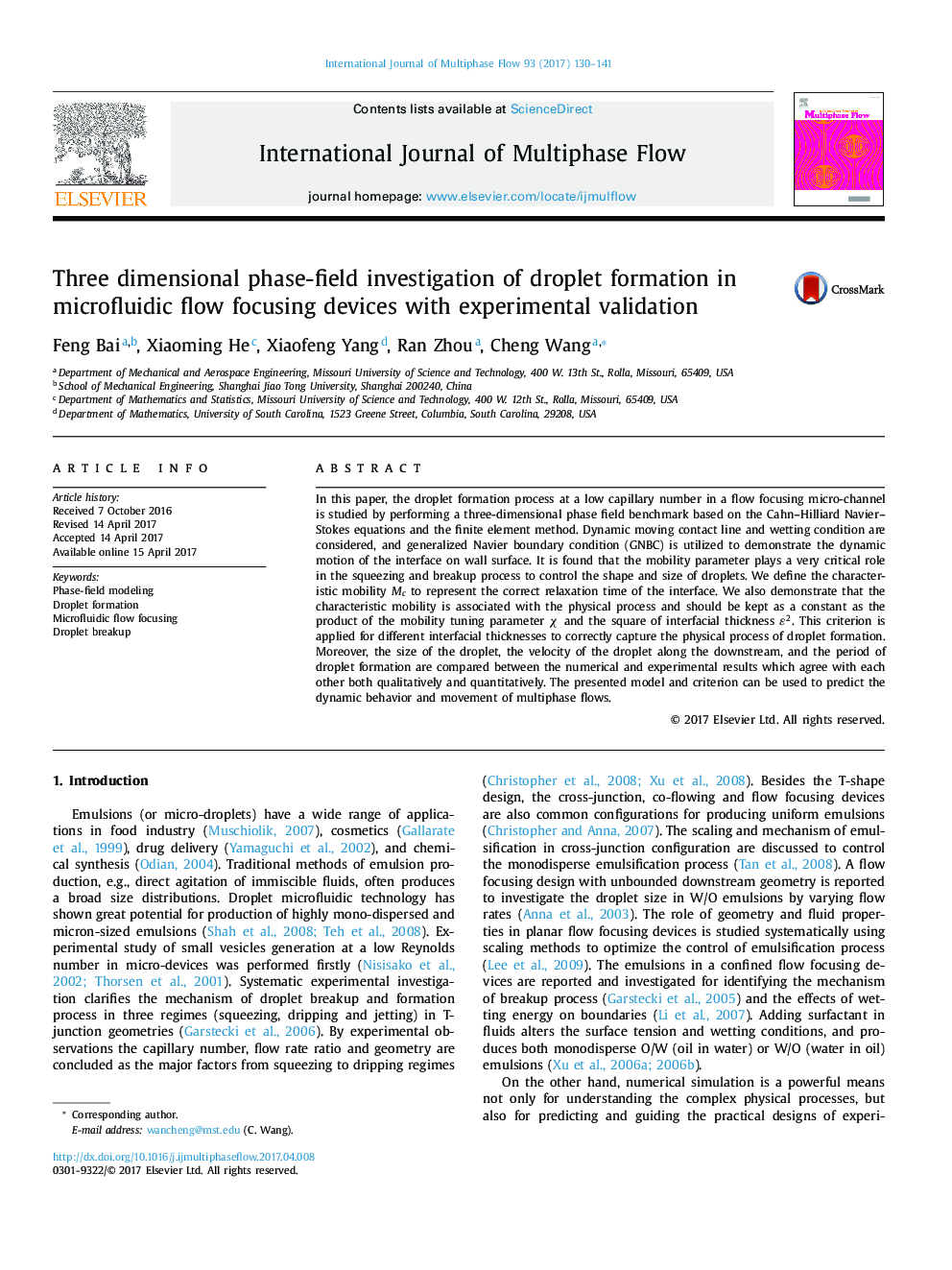| Article ID | Journal | Published Year | Pages | File Type |
|---|---|---|---|---|
| 4994997 | International Journal of Multiphase Flow | 2017 | 12 Pages |
Abstract
In this paper, the droplet formation process at a low capillary number in a flow focusing micro-channel is studied by performing a three-dimensional phase field benchmark based on the Cahn-Hilliard Navier-Stokes equations and the finite element method. Dynamic moving contact line and wetting condition are considered, and generalized Navier boundary condition (GNBC) is utilized to demonstrate the dynamic motion of the interface on wall surface. It is found that the mobility parameter plays a very critical role in the squeezing and breakup process to control the shape and size of droplets. We define the characteristic mobility Mc to represent the correct relaxation time of the interface. We also demonstrate that the characteristic mobility is associated with the physical process and should be kept as a constant as the product of the mobility tuning parameter Ï and the square of interfacial thickness ε2. This criterion is applied for different interfacial thicknesses to correctly capture the physical process of droplet formation. Moreover, the size of the droplet, the velocity of the droplet along the downstream, and the period of droplet formation are compared between the numerical and experimental results which agree with each other both qualitatively and quantitatively. The presented model and criterion can be used to predict the dynamic behavior and movement of multiphase flows.
Related Topics
Physical Sciences and Engineering
Chemical Engineering
Fluid Flow and Transfer Processes
Authors
Feng Bai, Xiaoming He, Xiaofeng Yang, Ran Zhou, Cheng Wang,
